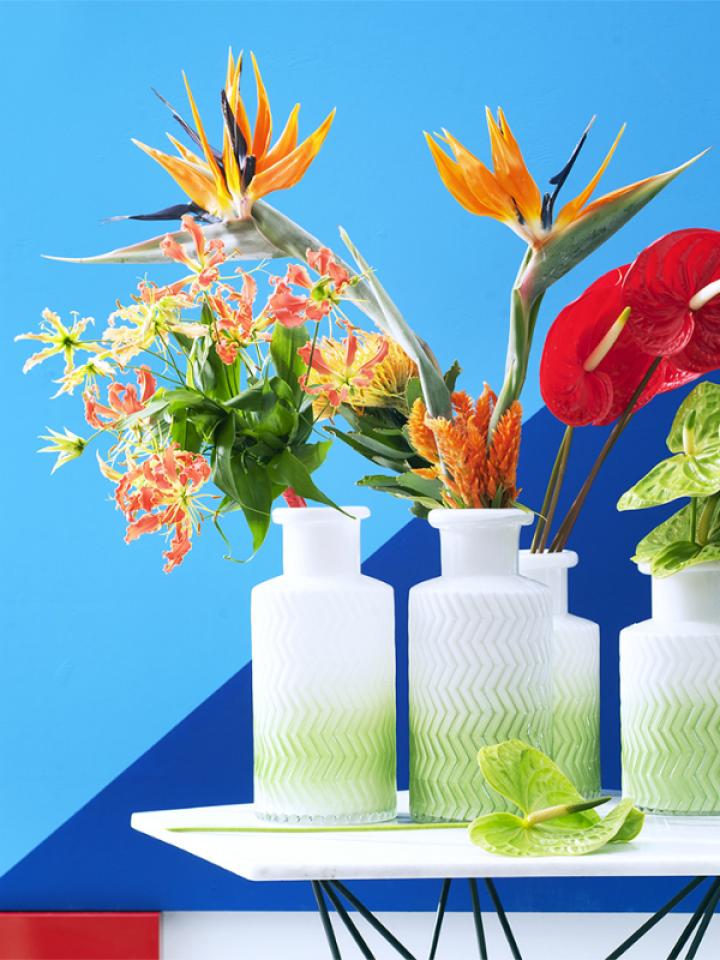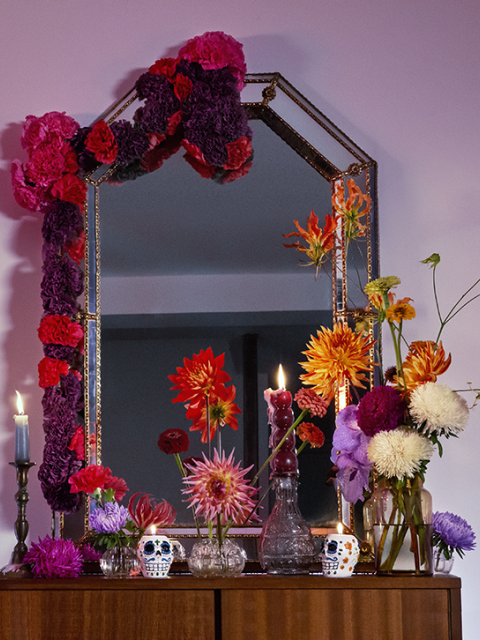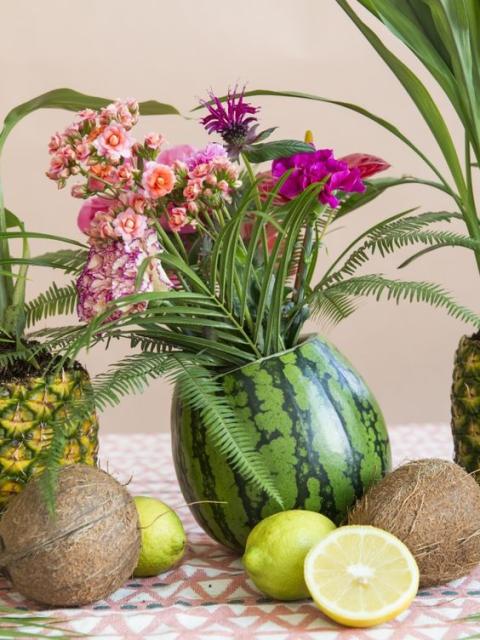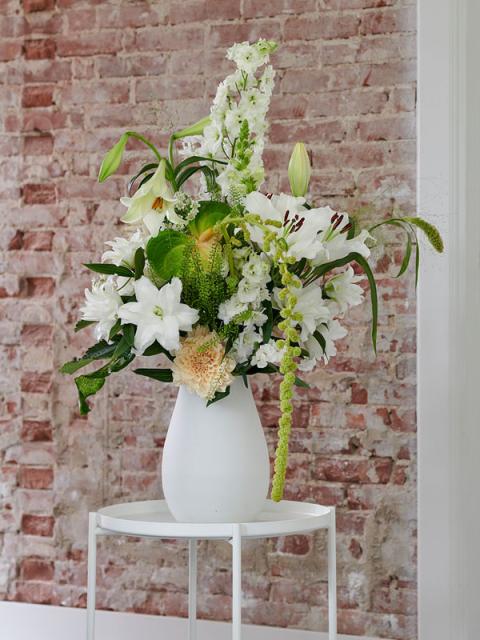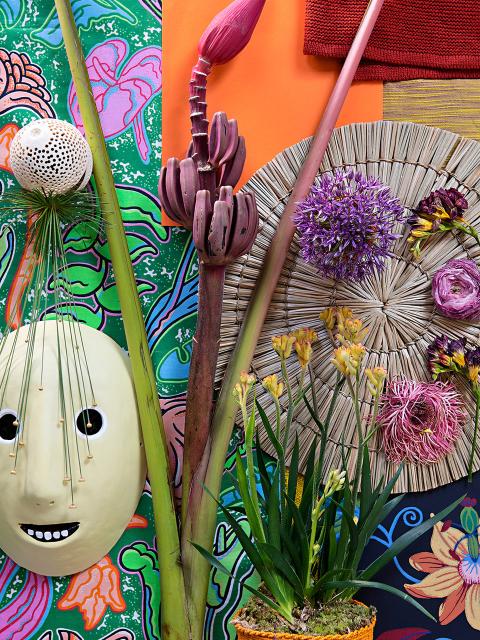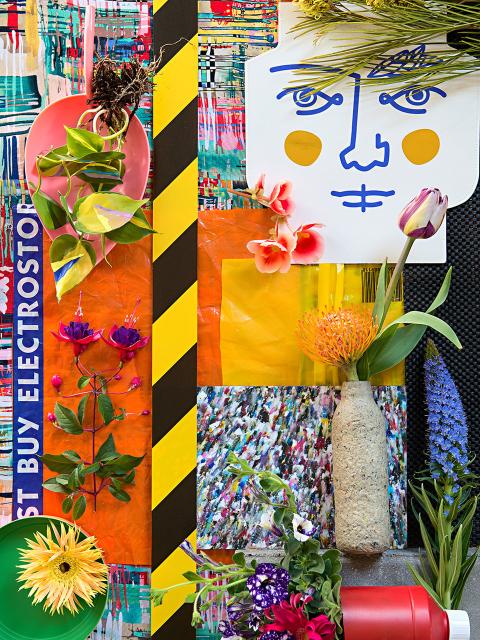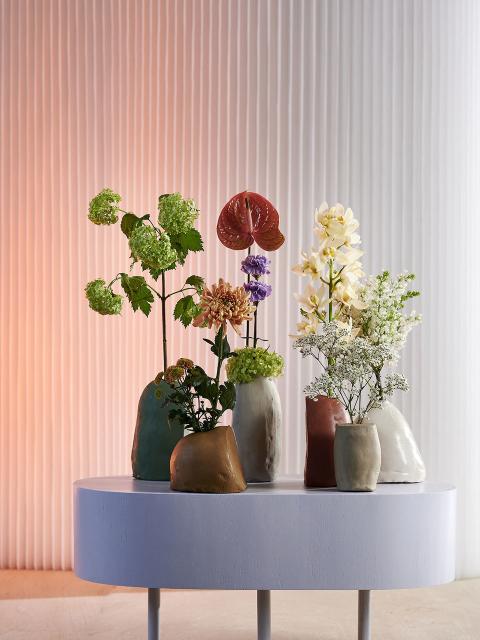Three charming ladies
This month the Flower Agenda focuses on the exotics: gloriosa, anthurium and strelitzia. These three charming ladies come from the far corners of the Earth: India, South America and South Africa. But how did they end up here?
Gloriosa
Gloriosa is native to India and the central to southern part of Africa. She was probably brought to England at the start of the 20th century by Lionel Walter Rothschild. And she was not the only exotic specimen on the boat. There are more than 150 plants and animals that bear explorer Lionel’s name!
Anthurium
The anthurium is native to Brazil, Ecuador, Peru, Colombia and Venezuela. The French botanist Eduard André discovered the flower in Colombia and Ecuador in 1876. He was a busy chap, since he also discovered orchids, bromeliads and various arums. He then brought them all back to Europe. Merci Eduard!
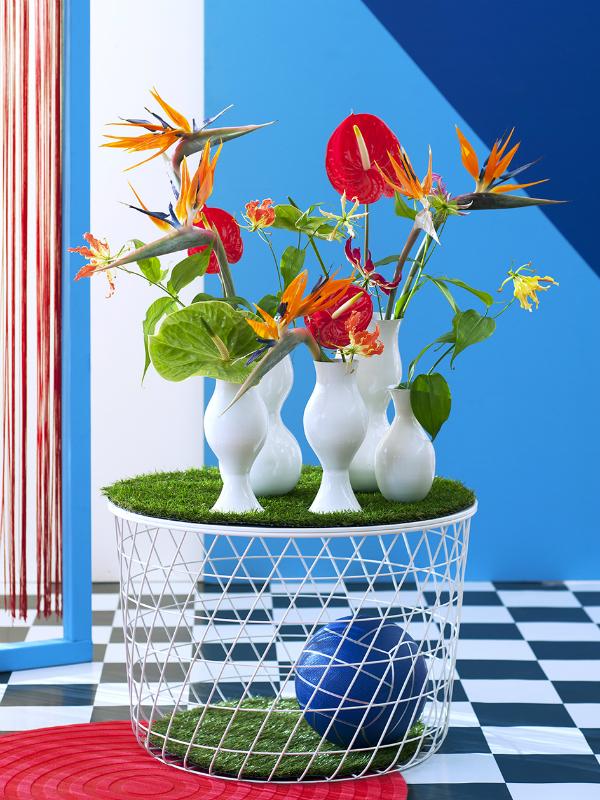
Strelitzia
Strelitzia originates from South Africa, and was transported to many countries in the 18th century. That’s also how it acquired its name: the wife of the English King George III, Charlotte of Meckelenburg-Strelitz, had a great love for flowers and plants, and so this remarkable flower was named after her.
Where shall we go?
All those stories of discovery are bound to have given you a touch of wanderlust. You might not fancy months on a cramped boat with the risk of scurvy, but certainly travelling on a luxury yacht or just an aeroplane. So where shall we go? Don’t forget your passport!

